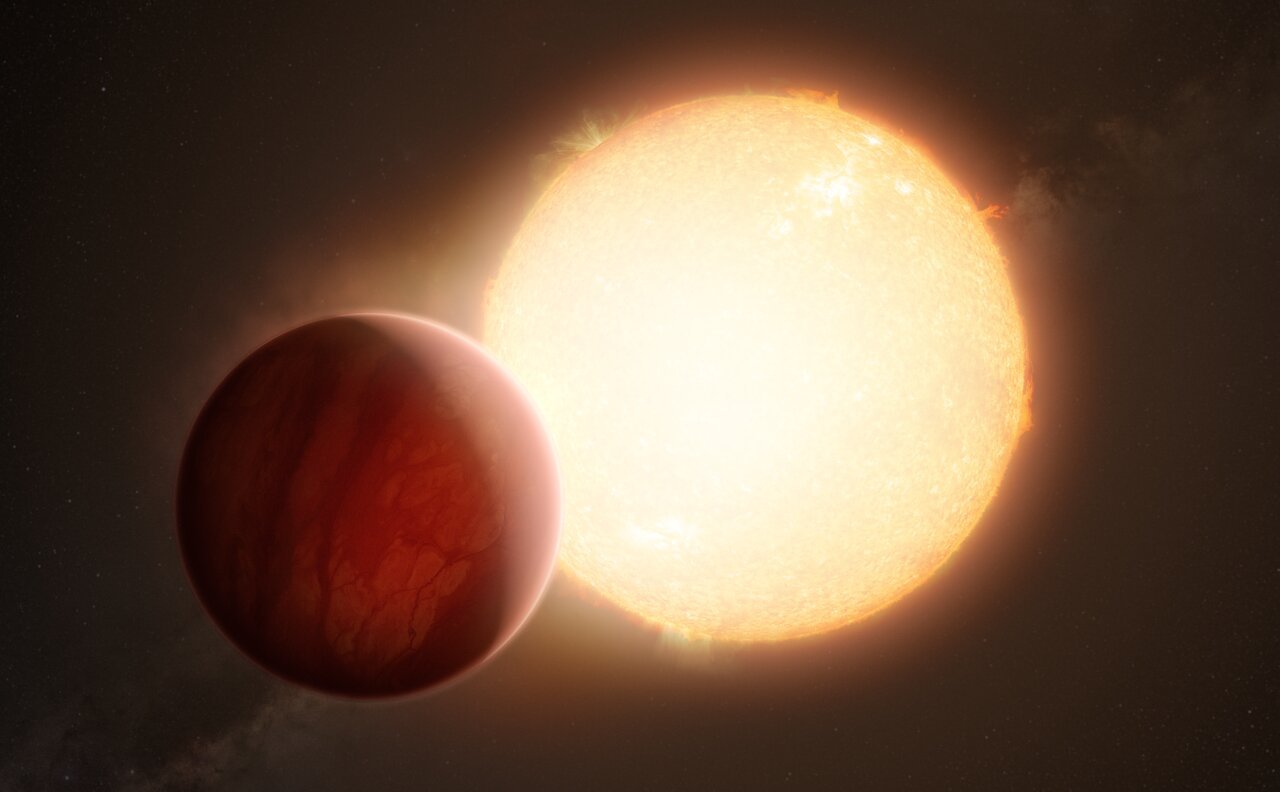Magnetic fields play an important, if sometimes underappreciated, part in planetary systems. Without a strong magnetic field, planets can end up as a barren wasteland like Mars, or they could indirectly affect massive storms as can be seen on Jupiter. However, our understanding of planetary magnetic fields are limited to the eight planets in our solar system, as we haven’t yet accrued much data on the magnetic fields of exoplanets. That could be about to change, according to a new preprint paper by a group of research scientists from Europe, the US, India and the UAE.
According to the paper, there are two main ways scientists could collect data on exoplanet magnetic fields. First is a direct detection using two “effects” known as the Hanle and Zeeman effects. The other is indirect which utilizes “hot spots” in a host star’s atmosphere.
For direct detection, an observatory would need to capture photons that travel through the planet’s atmosphere as it is making a transit. Given that transits are one of the primary ways exoplanets themselves are detected, there should be plenty of data of these events. With those photons in hand, the researchers could analyze them for the Hanle and Zeeman effects.
Fraser discusses detecting magnetic fields around an Earth-like exoplanet.
The Hanle effect happens when light that is affected by a magnetic field, especially one that is perpendicular to the line of sight. These polarized light beams can be absorbed by helium atoms in the planet’s atmosphere, making a clear spectrographic line at the “He I 1083 triplet”. Importantly, this effect is even in place for relatively weak magnetic fields, so it could be utilized for probing magnetic fields that are even weaker than Earth, though the orientation of the field plays an important role in what strength it is able to measure.
Polarization also plays a role in the Zeeman effect, but instead of linear polarization in a certain orientation, the Zeeman effect looks at circular polarization instead of the linear polarization used in the Hanle effect. Light passing through an exoplanet magnetic field could be circularly polarized by magnetic field lines pointing along the line of sight of the observatory, which meshes nicely with the perpendicular magnetic field lines that cause the Hanle effect.
Combining the two of these effects can provide a relatively clear picture of the strength and orientation of an exoplanet’s magnetic field. An additional advantage is that, since they use a differential measurement, its easy to remove potentially confounding data like photons from the host star itself. However, since those photons must pass through the exoplanet’s atmosphere, there also aren’t very many of them, so this technique only works with larger planets that are close to their host star.
Fraser discusses possibilities for the future of exoplanet research.
Indirect methods also require the host planets to be close to their star, but for a different reason. They identify stellar hot spots that are the manifestation of magnetic field interactions between the star and the planet. The planet, whose size doesn’t matter as much in this scenario, must be close enough to its host star to be within its Alfvén surface, a space defined by the area where star/planet magnetic interactions are supposed to occur.
Even Mercury isn’t within our Sun’s Alfvén surface, which is typically between 10 and 20 solar radii from the surface of the star. However, since the majority of exoplanets that have been found orbit very close to their parent star, that isn’t necessarily a disadvantage. This technique does have other disadvantages, though, like trying to disentangle whether the magnetic activity causing the hotspot is from a planet or from some other dynamic system in the star’s magnetic field itself.
Ultimately more science, and therefore more data, is needed. The authors hope future missions like the Habitable Worlds Observatory (HWO) will be well placed to collect the type of data needed to analyze these potential magnetic fields. That’s not to say current observatories can’t do some preliminary work with strong magnetic fields, but given that HWO won’t be launching for at least another 15 years, it might be a while before we truly get a better understanding of the magnetic fields of planets outside our own system.
Learn More:
A. Strugarek et al – Detecting and characterising the magnetic field of exoplanets
UT – Detecting Exoplanets by their Magnetospheres
UT – Measuring Exoplanetary Magnetospheres with the Square Kilometer Array
UT – Magnetic Fields Help Shape the Formation of New Planets
